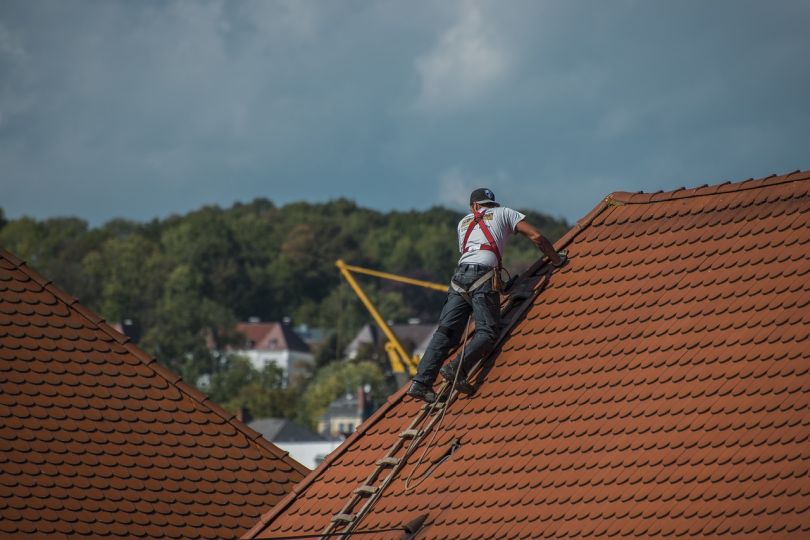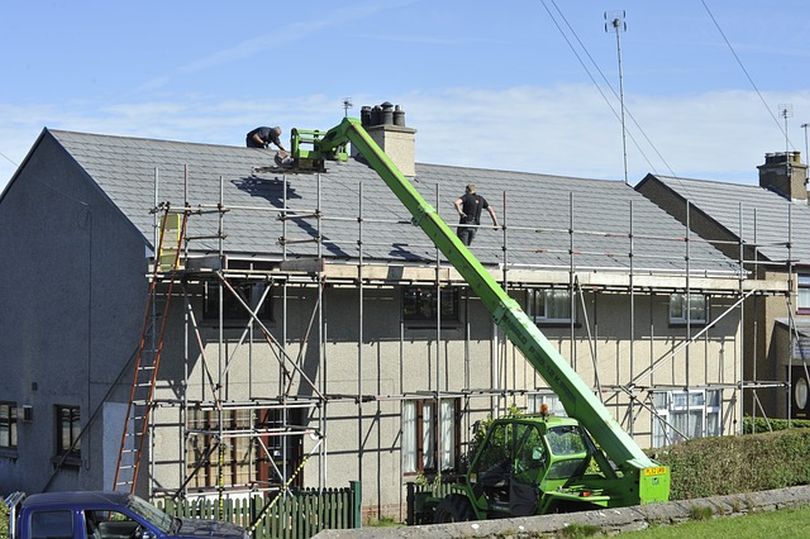The Common Causes of Roof Leaks and How to Fix Them
A roof leak is a homeowner’s nightmare. It can cause immediate damage to your property and lead to long-term issues such as mold growth, structural damage, and compromised insulation. Identifying the cause of a roof leak is crucial in effectively addressing the problem and preventing further damage. This article explores some common causes of roof leaks and guides how to fix them.

Damaged or Missing Shingles
A common culprit behind roof leaks is damaged or missing shingles. Over time, exposure to harsh weather conditions, UV rays, as well as wear and tear can cause shingles to crack, curl, or become loose. According to reputable roofers installing a roof in Springfield, this is one reason to replace your roof because it compromises the integrity of the roof, allowing water to seep through. To fix this issue, identify the damaged or missing shingles and replace them with new ones. Matching the shingles’ style, color, and material ensures seamless repair.
Also, the materials can deteriorate as roofs age, making them more susceptible to leaks. The constant exposure to the elements, temperature fluctuations, and general wear and tear can weaken roofing materials over time. If your roof shows signs of aging, such as cracked or brittle shingles, it may be time for a replacement. Consult a professional roofing service provider to assess the condition of your roof and distinguish if a replacement is necessary.
Faulty Flashing
Flashing seals joints and prevents water penetration in portions where the roof meets vertical surfaces, such as chimneys, skylights, or vents. If the flashing becomes damaged, rusted, or improperly installed, it can create gaps and openings for water to enter. To fix faulty flashing, carefully remove the old flashing, replacing it with new, properly installed flashing. Ensure that it is securely fastened and sealed to prevent future leaks.
Clogged Gutters and Downspouts
Gutters and downspouts are crucial in directing water away from your roof and foundation. When they become clogged with leaves, debris, or sediment, water can overflow and back onto the roof, causing leaks. Routinely clean and inspect your gutters and downspouts to ensure they are debris-free. Install gutter guards to minimize clogging and allow for proper water flow. If you notice any damage to the gutters or downspouts, repair or replace them as necessary.
Additionally, it’s vital to ensure proper alignment and slope of the gutters and downspouts. Water may not flow efficiently if not correctly positioned, leading to backups and potential leaks. Check that the gutters are securely fastened to the fascia board and that the downspouts are directing water away from your home’s foundation. If you notice any misalignment or improper slope, make the necessary adjustments or seek professional assistance to ensure proper water drainage.
Roof Vent Issues
Roof vents are essential for proper ventilation in your attic and throughout your home. However, they can also be a common source of roof leaks. Damaged or improperly installed roof vents can allow water to seep in during heavy rain or snow. Inspect the vents for cracks, gaps, or missing components. Replace damaged vents and ensure they are adequately sealed and fastened to the roof.
Skylight Problems
Skylights add natural light and aesthetic appeal to a home, but they can also be a potential source of leaks if not properly maintained. Leaks around skylights can occur due to damaged flashing, improperly sealed edges, or worn-out sealant. Inspect the skylight for any signs of damage or deterioration. Replace damaged flashing and reseal gaps or cracks around the skylight with the appropriate sealant.
Condensation and Ventilation Issues
Inadequate ventilation and excess condensation in the attic can cause moisture buildup, leading to roof leaks. Improper insulation, blocked vents, or insufficient airflow can contribute to this problem. Ensure your attic is adequately ventilated, allowing for proper air circulation and moisture control. Consider installing attic fans or ridge vents to improve ventilation. Insulate your attic appropriately to prevent warm air from escaping and condensing on the underside of the roof.

Addressing roof leaks promptly is essential to protect your property from further damage and maintain its structural integrity. By knowing the common causes of roof leaks, such as damaged or missing shingles, faulty flashing, clogged gutters, vent issues, skylight problems, condensation and ventilation issues, and aging roofing materials, you can take proactive measures to prevent and fix leaks. Regular roof inspections, proper maintenance, and timely repairs are vital to prolonging the lifespan of your roof and ensuring a dry and secure home.
Remember, prevention is always better than cure for roof leaks. Maintain a regular maintenance schedule, keep your roof clean and clear of debris, and promptly address any signs of damage. Investing in the care and maintenance of your roof lets you enjoy a leak-free home and peace of mind, knowing that your property is protected from the elements.
